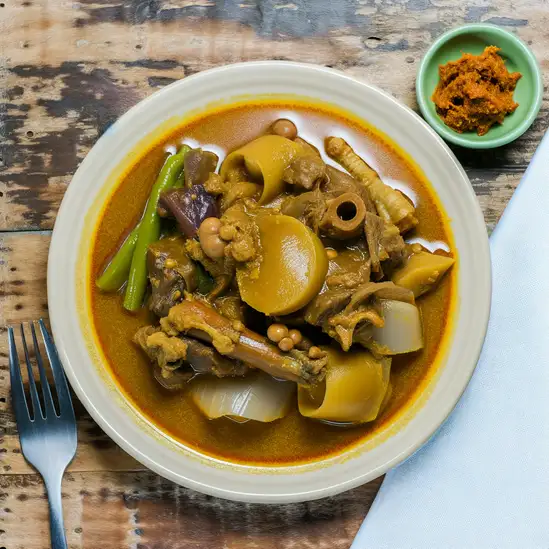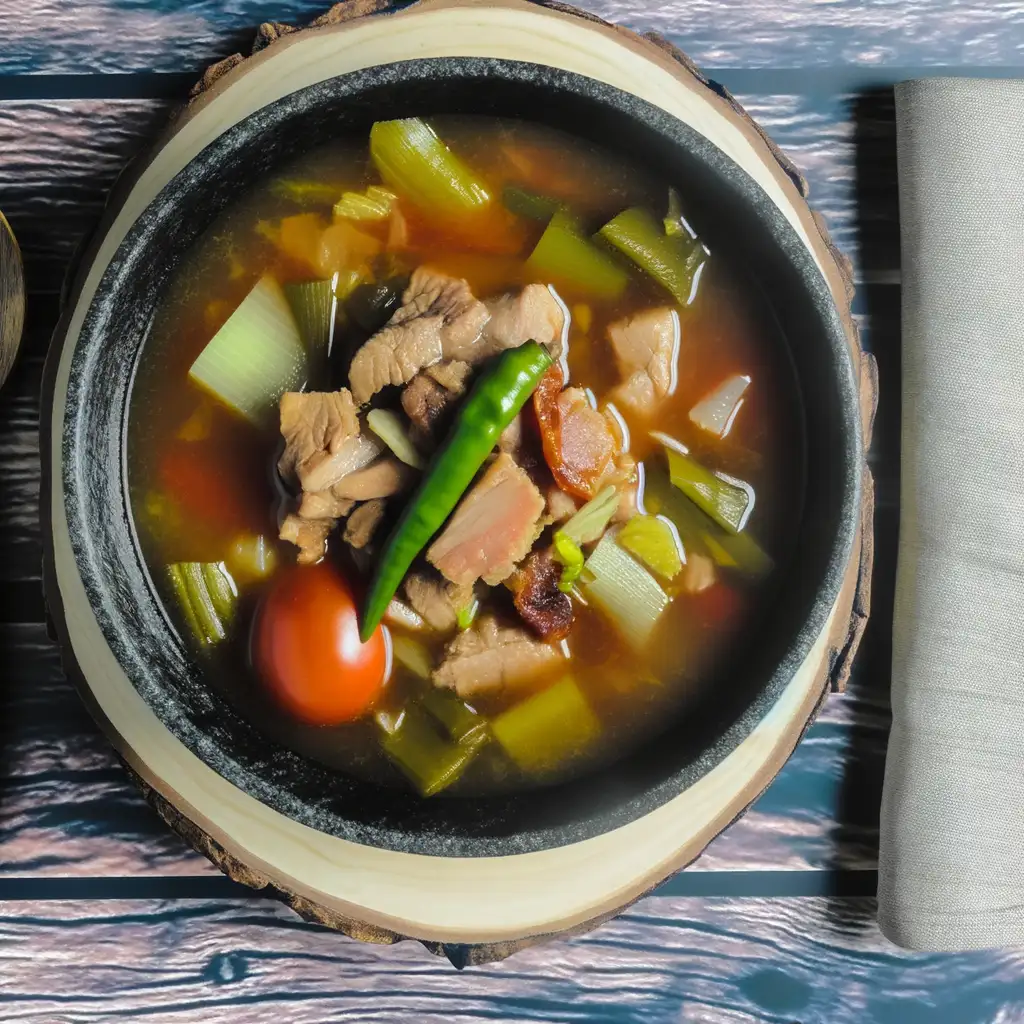



If you find yourself wandering through Pasig,you’ll immediately notice a lively pulse that’s both modern and deeply rooted in tradition. The city hums with energy—jeepneys clatter along busy streets,vendors call out their fresh fruit and street food,and the scent of grilled skewers mingles with the faint aroma of sampaguita flowers from nearby stalls. It’s a place where the old and new dance together effortlessly,from sleek shopping centers to charming heritage houses tucked away in quiet neighborhoods. What really makes Pasig special is its warmth. People here have this genuine friendliness that makes you feel like you belong,even if you’re just passing through. The local markets buzz with chatter and laughter,and the aroma of freshly brewed barako coffee invites you to pause and soak it all in. At night,the city lights shimmer along the Pasig River,reflecting a kaleidoscope of colors that make evening strolls feel almost magical. Culturally,Pasig is a vibrant tapestry. You can catch traditional Filipino festivals,sample authentic dishes like sinigang and pancit at family-run eateries,or explore art spaces that showcase local creativity. It’s a city that embraces its history while eagerly stepping into the future,making every visit feel like a new discovery. Trust me,Pasig isn’t just a stop on the map—it’s a place that stays with you long after you’ve left.
The information on this page is currently being reviewed by Tripkliq and should be used as a guide only
Eng word: Hello
Eng pronunciation: Kah-moo-stah
Local language: Kamusta
Eng word: Goodbye
Eng pronunciation: Pah-ah-lahm
Local language: Paalam
Eng word: Thank you
Eng pronunciation: Sah-lah-maht
Local language: Salamat
Eng word: How much
Eng pronunciation: Mahg-kah-noh
Local language: Magkano
Eng word: Toilet
Eng pronunciation: Bahn-yo
Local language: Banyo
Eng word: Help me
Eng pronunciation: Too-loo-ngahn moh ah-koh
Local language: Tulungan mo ako
Eng word: Yes
Eng pronunciation: Oh-oh
Local language: Oo
Eng word: No
Eng pronunciation: Hin-deh
Local language: Hindi
Eng word: Excuse me
Eng pronunciation: Pah-oo-mahn-hin
Local language: Paumanhin
Pasig is one of the oldest known settlements in the Philippines, with its history dating back to pre-Hispanic times. It was originally a part of the Kingdom of Namayan.
The Immaculate Conception Cathedral, also known as Pasig Cathedral, was established in 1573. It is one of the oldest churches in the Philippines and a significant religious site.
The Pasig River, which runs through the city, has been a vital waterway for trade and transportation since ancient times. It connects Laguna de Bay to Manila Bay.
During the American colonial period, Pasig became a part of the newly established Rizal Province in 1901. It played a significant role in the development of the region.
Ortigas Center, a major commercial and business district in Pasig, was developed in the 1960s. It is now home to numerous multinational companies, shopping malls, and entertainment hubs.
Pasig was an active participant in the Philippine Revolution against Spanish rule. The Pasig Revolt in 1896 was a significant event in the city's history.
The Pasig City Museum, housed in the Concepcion Mansion, showcases the rich history and cultural heritage of Pasig. It was built in 1937 and served as a Japanese headquarters during World War II.
Pasig was officially declared a highly urbanized city in 1994. This status has contributed to its rapid development and modernization.
Bahay na Tisa, built in the 1850s, is one of the oldest surviving Spanish colonial houses in Pasig. It is a well-preserved example of traditional Filipino-Spanish architecture.
In Pasig, the most common Power Adaptor is Type A, Type B.



A rich and savory oxtail stew made with peanut sauce, often served with bagoong (fermented shrimp paste).

A popular Filipino dessert made with crushed ice, sweetened fruits, jellies, and topped with leche flan and ube ice cream.

Crispy spring rolls filled with ground pork, vegetables, and spices, typically served with a sweet and sour dipping sauce.

Stir-fried egg noodles with a mix of vegetables, meat, and seafood, often served during celebrations.

A sour pork soup made with tamarind, tomatoes, and various vegetables, known for its tangy flavor.

A traditional rice cake made with rice flour and coconut milk, often topped with salted egg and cheese, usually enjoyed during the Christmas season.

Crispy deep-fried pork belly served with a side of liver sauce, known for its crunchy skin and tender meat.

Crispy deep-fried pork belly served with a side of liver sauce, known for its crunchy skin and tender meat.
Imagine stepping into a place where history hums through the streets and the ocean breeze carries the scent of salty adventure—that’s Cebu City for you. The moment you arrive,there’s this lively energy that wraps around you,a mix of old-world charm and modern buzz. You’ll find yourself wandering through colorful markets where the chatter of vendors blends with the aroma of freshly grilled street food—think sweet,smoky lechon sizzling over coals,tempting you at every corner.
Cebu’s character is a beautiful blend of the past and present. Ancient Spanish forts and centuries-old churches stand proudly alongside sleek cafes and vibrant street art. The city pulses with warmth,not just from the tropical sun but from the people who greet you with genuine smiles and stories. At night,the streets light up with music and laughter,and you can almost taste the festive spirit in the air.
What really makes Cebu unforgettable is how it feels alive in every sense. You can hear the waves crashing nearby,see the colorful jeepneys weaving through traffic,smell the tropical fruits at the market,and feel the warmth of the sun on your skin as you explore. It’s a place where culture,history,and everyday life blend seamlessly,inviting you to dive in and experience its vibrant soul firsthand.
If you ever find yourself craving a place where nature’s calm meets a laid-back island spirit,Puerto Princesa is where you want to be. The moment you step off the plane,there’s this warm,salty breeze that wraps around you,carrying the faint scent of the sea and tropical blooms. It’s a city that doesn’t rush — people move with a gentle rhythm,and the streets hum softly with the chatter of locals and the occasional strum of a guitar from a nearby café. It feels like a breath of fresh air,both literally and figuratively.
What really makes Puerto Princesa stand out is its deep connection to nature. The famous Underground River is just the beginning — lush mangroves,crystal-clear waters,and vibrant coral reefs surround the city,inviting you to explore. You can hear the calls of exotic birds in the morning and watch fishermen bring in their catch as the sun dips low,painting the sky in shades of pink and orange. The food scene here is a delightful surprise too — fresh seafood grilled right on the beach,sweet tropical fruits bursting with flavor,and local dishes that tell stories of the sea and the land.
But beyond the sights and tastes,it’s the people who make Puerto Princesa unforgettable. Their warmth and genuine smiles make you feel like you’re not just visiting,but truly welcomed. Whether you’re wandering through the bustling market or sharing a laugh with a vendor,there’s a sense of community that lingers long after you leave. It’s a place that invites you to slow down,soak in the simple joys,and leave with a heart full of stories.
If you ever find yourself wandering through the heart of Bohol,Tagbilaran City greets you with a warm,unhurried rhythm that feels like a gentle hug after a long journey. The city hums with life—not the overwhelming buzz of a metropolis,but a lively,welcoming energy where jeepneys rattle by and street vendors call out their fresh fruit and local snacks. As you stroll along the waterfront,the salty breeze carries the faint scent of grilled seafood mingling with tropical flowers,inviting you to slow down and savor the moment.
Tagbilaran’s charm lies in its blend of old and new. You’ll catch glimpses of Spanish-era churches standing proudly beside colorful markets where locals barter over ripe mangoes and sticky rice treats. The city’s pulse is deeply tied to its people—friendly,easygoing,and proud of their heritage. At night,the streets light up with laughter and music spilling from small eateries where you can taste the rich flavors of Boholano cuisine,like the sweet,tender kalamay or freshly caught fish cooked with coconut milk.
What really stays with you is the city’s sense of community and its connection to the sea. Whether you’re watching fishermen haul in their catch at dawn or joining a lively fiesta,Tagbilaran feels like a place where stories are shared over steaming cups of coffee and where every corner invites you to discover a new layer of its soul. It’s not just a stopover—it’s a place that quietly pulls you in and makes you want to stay a little longer.
If you ever find yourself craving a place where vibrant city life meets the gentle embrace of nature,Davao City is where you want to be. The moment you step off the plane,there’s this warm,welcoming energy that wraps around you—like the city itself is inviting you to slow down and savor every moment. The air carries a subtle mix of tropical blooms and the faint,salty hint of the nearby sea,while the streets buzz with a friendly hum of jeepneys and chatter in a melody of languages.
Walking through Davao,you’ll notice how the city wears its culture proudly. From the colorful street markets where vendors call out their fresh fruits and local delicacies,to the intricate weaves and crafts that tell stories of indigenous tribes,there’s a deep respect for heritage here. And the food? Oh,the food! Imagine biting into a juicy durian (if you’re brave enough),or savoring grilled tuna so fresh it practically melts in your mouth,all while sipping on a sweet,refreshing calamansi juice.
What really sets Davao apart is its balance—towering mountains and lush parks sit just a short drive from bustling urban spots. You can spend your morning hiking up Mount Apo,the Philippines’ highest peak,then wind down with a stroll along the riverwalk as the sun dips low,painting the sky in shades of orange and pink. It’s a city that feels alive but never rushed,where every corner invites you to explore,taste,and connect.
If you ever find yourself craving a place where history hums softly alongside the buzz of everyday life,Iloilo City is where you want to be. The moment you step into its streets,there’s this warm,inviting energy—like the city is gently nudging you to slow down and savor its stories. You’ll notice the colonial-era buildings standing proudly beside modern cafes,their facades telling tales of centuries past. The air carries a subtle mix of salty sea breeze and the sweet aroma of freshly baked pan de sal,making every morning feel like a comforting embrace.
Walking through Iloilo,you’ll hear the lively chatter of locals,the clinking of glasses in cozy eateries,and the distant strum of guitars from street performers. The city’s character shines brightest in its festivals,especially the Dinagyang,where vibrant costumes and rhythmic drums fill the streets with infectious joy. But even on quieter days,the genuine smiles of Ilonggos and their easygoing hospitality make you feel like you’ve found a second home.
And then there’s the food—oh,the food! From the rich,savory batchoy served steaming hot in humble noodle shops to the sweet,creamy taste of fresh mangoes,every bite is a celebration of local flavors. Iloilo isn’t just a place to visit; it’s a place to experience,where every corner invites you to pause,breathe,and fall a little in love with its soul.
Dubbed the 'City of Flowers,' Zamboanga is close to the pink sand beaches of Sta. Cruz Island and offers a unique blend of Spanish and Filipino culture.
ExploreScammers install skimming devices on ATMs to steal card information and PINs from unsuspecting users.
Unlicensed money changers may offer attractive rates but shortchange tourists or provide counterfeit bills.
Individuals or groups may approach tourists claiming to collect donations for fake charities or causes.
Scammers pose as tour guides and offer overpriced or fake tours, often providing little to no value.
Scammers create fake hotel booking websites or listings, tricking tourists into paying for non-existent accommodations.
Tricycle drivers may charge tourists excessively high fares, especially if the tourist is unfamiliar with local rates.
Crowded areas like markets or public transportation hubs are hotspots for pickpockets targeting tourists.
Scammers set up street gambling games, such as shell games, designed to trick participants into losing money.
Street vendors may charge tourists significantly higher prices for goods or souvenirs compared to locals.
Some taxi drivers may refuse to use the meter and charge tourists inflated rates, especially for short distances.
The Philippines has very strict laws regarding the possession, use, and distribution of illegal drugs. The Comprehensive Dangerous Drugs Act of 2002 (Republic Act No. 9165) imposes severe penalties, including long prison sentences and heavy fines, for drug-related offenses. Tourists should be aware that even small quantities of illegal drugs can lead to serious legal consequences. The government has a zero-tolerance policy towards illegal drugs, and enforcement is rigorous.
In Pasig City, smoking is regulated under the Tobacco Regulation Act of 2003 (Republic Act No. 9211) and local ordinances. Smoking is prohibited in public places such as schools, hospitals, public transportation, and enclosed public spaces. Designated smoking areas are provided in some establishments, but these must comply with specific guidelines. Violators may face fines and other penalties.
Vaping in Pasig City is subject to similar regulations as smoking. The use of electronic cigarettes and other vaping devices is prohibited in public places where smoking is banned. This includes schools, hospitals, public transportation, and enclosed public spaces. Designated vaping areas may be available in some locations. Violators can be fined and penalized under local ordinances.
What are other people saying about Pasig?
Recent Social posts about Pasig
There is nothing to show you for now.